Miraculous skin metamorphosis for beached amphibious fish
Taking those first steps on land after emerging from the primordial swamp required a lot more than simply changing the way the earliest pioneers moved and breathed. The ancient innovators must also have sealed their skins to prevent water loss in the relatively dry surroundings. They may even have repurposed their external layer to absorb […]
Cancer is one of the leading causes of morbidity and mortality worldwide, and the discovery of new drugs for cancer therapy is one of the most important objectives for the pharmaceutical industry. Snake venoms are complex mixtures containing different peptides, proteins, enzymes, carbohydrates and other bioactive molecules, which are secreted by […]
News, Ants Never Get Stuck in Traffic James. Here’s Why
Ants are much better than humans at organizing their collective traffic flow when foraging for food, but how they manage to do so isn’t fully understood.
Learn more (opens external site)
Denali Therapeutics Biology Discovery Internship
Denali is seeking a motivated graduate student or postdoctoral fellow for an internship position in the Biology Discovery group to gain meaningful research experience in microglial biology. This is a hands-on laboratory position with abundant opportunity for collaboration with other researchers in a dynamic and fast-paced environment. The successful candidate will support high priority projects. […]
In a recent paper, researchers at the American Institute of Physics analyzed the swimming of zebrafish in a tank with particle image velocimetry and high-speed cameras. Their data showed that zebrafish are able to precisely control body fluctuations in order to generate “movable vortex pairs of high- and low-pressure regions” which […]
Wyss Insititute Harvard, Bostom, MA
As Pac-man-shaped Xenobot “parents” move around their environment, they collect loose stem cells in their “mouths” that, over time, aggregate to create “offspring” Xenobots that develop to look just like their creators.
Learn more (opens external site)
News, underground communication networking of trees
“Wise old mother trees feed their saplings with liquid sugar and warn the neighbors when danger approaches. Reckless youngsters take foolhardy risks with leaf-shedding, light-chasing and excessive drinking, and usually pay with their lives. Crown princes wait for the old monarchs to fall, […]
FNs were first described as potent antiviral agents 40 years ago, and recombinant IFN-α2a and IFN-α2b were approved for the treatment of hairy cell leukemia just 11 years ago. Today, α-IFNs are approved worldwide for the treatment of a variety of malignancies and virologic diseases. Although the exact mechanism of action of IFN-α in the […]
News, living robots can now reproduce
Xenobots are “biological robots made from frog cells that can replicate by smooshing loose cells into new robots—a reproduction method not seen in any other organism.” These xenobots can move and heal themselves, and when brought together, can combine to construct new xenobots, which is what really […]
Gavin Kenneally, grew up inspired by Professor Full, who assisted him further during his undergraduate studies and connected him with his PhD advisor. After PhD, he co-founded Ghost Robotics where his team created robot dogs to patrol the U.S. border.
He describes: “What differentiates our technology is […]
Memory is traditionally associated with complex organisms that have a nervous system. However, simple organisms can store information about previous experiences, such as nutrient sources, for survival purposes. Organisms like the unicellular slime mold Physarum polycephalum utilizes its network of interlaced tubes in varying diameters that shrink and grow in response […]
Harman, who was already building crude canoes for his fishing expeditions, began experimenting with curves and spiral shapes. He sketched his vision for a boat “as nature would have designed it,” and took it to a boat-building expert who told him that it […]
As part of the Design Field Notes series, Berkeley architecture associate professor M. Paz Gutierrez joined Jacobs Hall for its annual Fall Talks. In her talk, she shared her genre-bending projects, which often draw from nature for inspiration and materials. Explaining that she […]
Bio-Inspired Robotics Design Conference, New York
International Conference on Bio-Inspired Robotics Design is a conference taking place in New York on April 25-26, 2022. The conference was postponed from 2020 due to the coronavirus. The website states that they are looking for contributors to the conference, under the “Call for papers” tab. They also mention guidelines for […]
Recognition of natural objects in the archerfish
This article suggests that there is an existence of a complex visual process in the archerfish visual system that enables object recognition and categorization.
Learn more (opens external site)
Snake’s have infrared vision. Scientists in this paper research and examine snakes to determine if infrared receptors in snakes are via thermal or photochemical mechanisms
Learn more (opens external site)
This article reviews the liquid-mediated adhesion and capillary forces of slug mucus which allows slugs to stick almost any solid surface and move locomotively. The researchers test slug adhesion on both anti-adhesive and non-wetting surfaces.
Learn more (opens external site)
Paper, ‘Math neurons’ identified in the brain
The brain has neurons that fire specifically during certain mathematical operations. The findings indicate that some of the neurons detected are active exclusively during additions, while others are active during subtractions. They respond in the same manner whether the calculation instruction is written down as a word or a symbol.
Researchers found a bull ant venom component that exploits a pain pathway in mammals, which they believe evolved to stop echidnas attacking the ant’s nests.
Abstract:
Australian bull ants have evolved a venom molecule perfectly tuned to target one of their predators — the echidna — that also could have […]
News, Insect Inspired Tiny Agile Drones
Robotic researchers at MIT solved a design problem in building tiny drones by replacing typical hard wings with soft insect-inspired wings that beats at a very high frequency. These changes enabled the centimeter-scale drones that demonstrated unprecedented resilience and agility in flight.
Learn more (opens external site)
When we think of robots, we immediately envision them being made out of hard and durable metal. However, soft materials within animals have inspired a new wave of “soft robots”. This paper discusses the recent development in “Soft Robotics” and explains the mechanisms […]
Mechanics behind the shell of crush-resistant beetles
Previously it was thought that the steel plates of crush-resistant beetles and the material that composed the exoskeleton itself lended itself to the great strength of the shell. However, it was recently discovered that it is the connections between the exoskeleton and elytra (a specific exoskeleton substructure) which create an air-filled […]
Centimetre-scale fliers must contend with the high power requirements of flapping flight. Insects have elastic elements in their thoraxes which may reduce the inertial costs of their flapping wings. Matching wingbeat frequency to a mechanical resonance can be energetically favourable, but also poses control challenges. Many insects use frequency modulation on […]
This beautiful shrub is native to Europe, North Africa, and West Asia. It is one of the best-known poisonous plants from ancient Egypt to the Middle Ages up until now. It is the ancient Egyptians they were responsible for promoting its use as a powerful narcotic.
The toxins responsible for its […]
The amazing adhesive property of the gecko toe has been researched, analysed and documented to a significant degree, but there has been little research on how a gecko is able to coordinate its many ‘sticky’ toes in agile motion. A recent research conducted in May 2020 explores the control function of […]
In response to the growing demand for indoor environmental quality (IEQ) and energy efficiency, abundant innovative bio-inspired cooling technologies have been proposed and their applications in buildings have been greatly demonstrated in the previous decades to enhance the benefits of building occupants. IEQ is associated with human […]
ORNILUX® BIRD PROTECTION GLASS
Orb weaver spiders, common worldwide, build their distinctive webs using strands of silk with UV reflective properties. Because birds can see ultraviolet light, the reflective threads prevent them from colliding with and destroying the webs. Inspired by the spider’s strategy, ORNILUX® Bird Protection Glass has a patterned, […]
The miniature robber fly Holcocephala fusca intercepts its targets with behaviour that is approximated by the proportional navigation guidance law. During predatory trials, we challenged the interception of H. fusca performance by placing a large object in its potential flight path. In response, H. fusca deviated from the path predicted by […]
Podcast, Forests on Forests
Second part of a story about the forest’s interconnectedness through its roots. In fact, this story is about canopy soil, a relatively new discovery that soil exists on the top of trees that helps to facilitate all sorts of life. The major discovery in this piece, however, was the fact that there were trees of […]
News, Hawks’ pursuit of prey has implications for capturing rogue drones
Researchers at the University of Oxford have found that Harris Hawks, when pursuing an erratically maneuvering dummy bunny, can utilize a mixed guidance law to more effectively pursue it. Their turn rate is determined by feeding back information on the angle between their target and current flight direction, along with how […]
This article is about research on the ladybird beetle’s adhesive ability in the air and underwater. It was considered that the air bubbles underneath the pads of the legs would help them walk on high slope surface, but the team is testing out if that is actually the case.
Learn more (opens external site)
News, Unbreakable glass inspired by seashells
Scientists develop stronger and tougher glass, inspired by the inner layer of mollusk shells. Instead of shattering upon impact, the new material has the resiliency of plastic and could be used to improve cell phone screens in the future, among other applications.
Learn more (opens external site)
Paper, Comprehensive Biomechanism of Impact Resistance in the Cat’s Paw Pad
This study investigated the impact-resistant biomechanism of a cat’s paw from macroscopic and microscopic perspectives. The sample of the study included five domestic cats that died of heart disease. After being approved by the Science and Ethics Committee of Beihang University, the cats’ bodies were used for anatomical analysis. There were […]
A new study has found the tiny structures made up of mushroom-shaped micropillars topped with ultra-small pores allow lizards to quickly detach their tails when needed.
Microscopy images showed that each lizard tail muscle break-off point consists of highly dense mushroom-shaped micropillars with ultra-small nanopores dotting […]
Paper, Lizard tails break off when needed.
A team of researchers affiliated with several institutions in the United Arab Emirates and the U.S. has discovered the mechanism that allows lizards to maintain a tail during normal activities and then to release it when they need to avoid predators.
Global biodesign competition
Here is a global biodesign competition. Their mission is to not only spread the importance of biodesign but also to implement its technology into everyone’s daily life.
Learn more (opens external site)
Cellular pathways that repair chromosomal double-strand breaks (DSBs) have pivotal roles in cell growth, development and cancer. These DSB repair pathways have been the target of intensive investigation, but one pathway — alternative end joining (a-EJ) — has long resisted elucidation. In this Review, we highlight recent progress in our understanding of a-EJ, especially the […]
Scientists reveal how Venus fly trap plants snap shut
In this connection we have highlighted an article that describes how scientists have a breakthrough in their understanding of the proteins that allow venus flytraps to be touch sensitive and close. The name of this protein is called Flycatcher1, and having a better understanding of it gives scientists a better idea […]
The Health Tech CoLab is a center at UC Berkeley that provides a collaborative space for student teams and startups working on medical devices, diagnostics, and digital health tools aimed at increasing access to health care.
This initiative comes at a time when […]
Three-dimensional (3D) printing is a valuable tool in the production of complexes structures with specific shapes for tissue engineering. Differently from native tissues, the printed structures are static and do not transform their shape in response to different environment changes. Stimuliresponsive biocompatible materials have emerged in the biomedical field due to the ability of
[…]
Learn about our two Decals!
 Click here to find out more about our Fall Bioinspired Design Decal and our Spring Bioinspired Design in Action Decal – ALL MAJORS are welcome.
Click here to find out more about our Fall Bioinspired Design Decal and our Spring Bioinspired Design in Action Decal – ALL MAJORS are welcome.Berkeley BioDesign Community
 Click here to learn about the BioD: Bio-Inspired Design @ Berkeley student organization or here to signup for more info.
Click here to learn about the BioD: Bio-Inspired Design @ Berkeley student organization or here to signup for more info.Search
Student Login


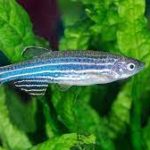





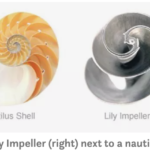


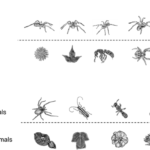
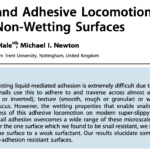

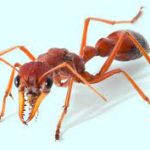
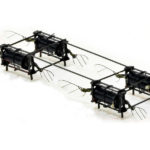
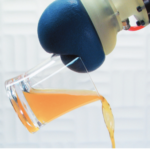

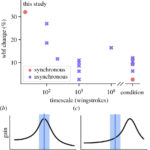


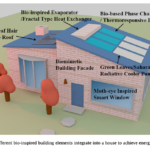

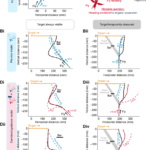


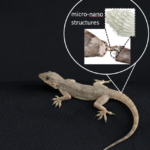
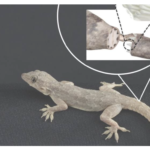
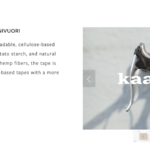
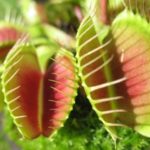
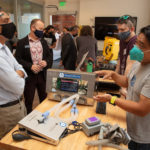


I imagine that the neurological circuits underlying these processes are governed by both 2d spacing maps with their brains as…
to reduce the impact of car accidents, it may be possible to study the force diverting physics of cockroaches to…
you see this type of head-bobbing stability in many avian creatures related to pigeons like chickens. the head ability to…
not like they taught horses how to run! this is an example of convergent evolution where both sea creatures and…
The brain functions in a similar way with neuronal connections. our brains are able to utilize the multiplicity of connections…